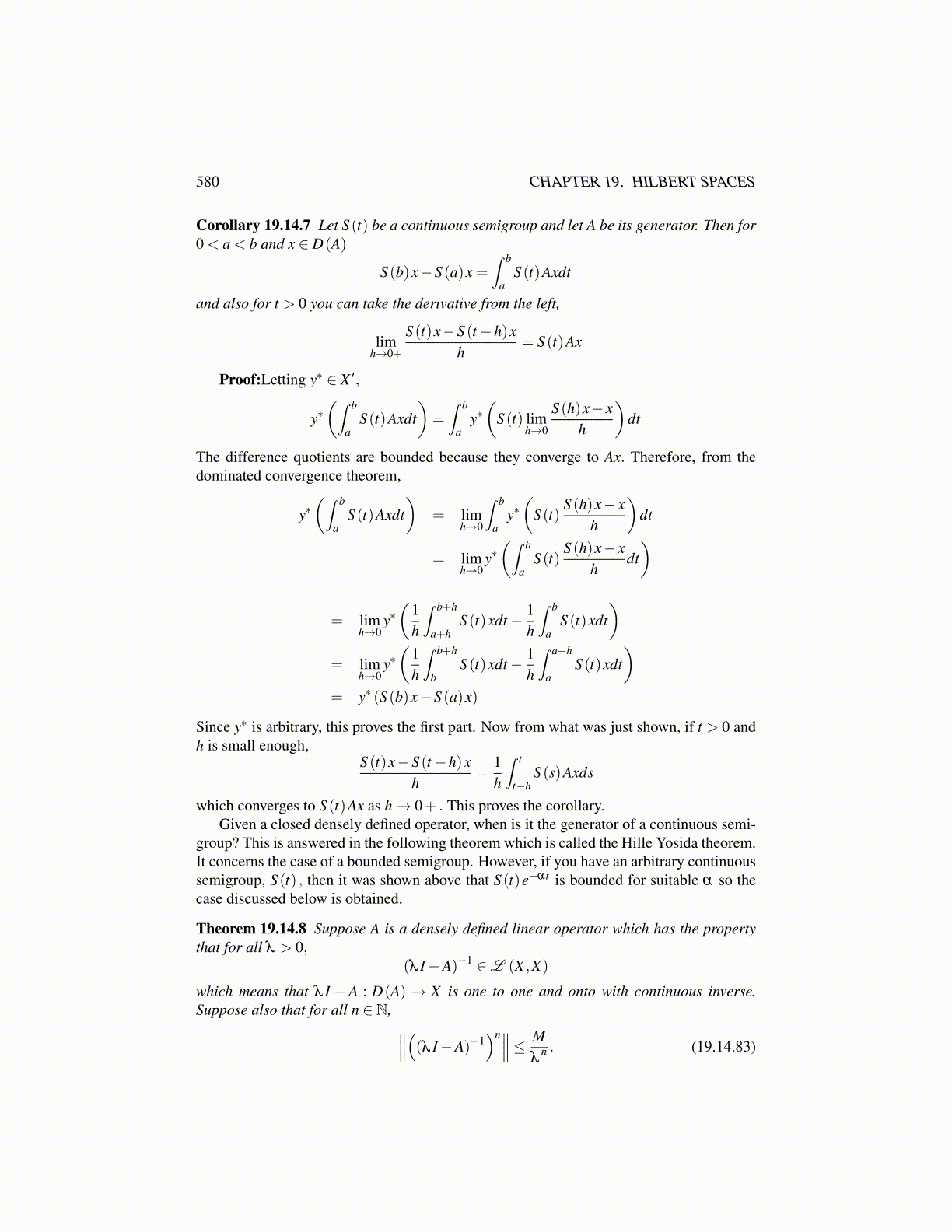
580 CHAPTER 19. HILBERT SPACES
Corollary 19.14.7 Let S (t) be a continuous semigroup and let A be its generator. Then for0 < a < b and x ∈ D(A)
S (b)x−S (a)x =∫ b
aS (t)Axdt
and also for t > 0 you can take the derivative from the left,
limh→0+
S (t)x−S (t−h)xh
= S (t)Ax
Proof:Letting y∗ ∈ X ′,
y∗(∫ b
aS (t)Axdt
)=∫ b
ay∗(
S (t) limh→0
S (h)x− xh
)dt
The difference quotients are bounded because they converge to Ax. Therefore, from thedominated convergence theorem,
y∗(∫ b
aS (t)Axdt
)= lim
h→0
∫ b
ay∗(
S (t)S (h)x− x
h
)dt
= limh→0
y∗(∫ b
aS (t)
S (h)x− xh
dt)
= limh→0
y∗(
1h
∫ b+h
a+hS (t)xdt− 1
h
∫ b
aS (t)xdt
)= lim
h→0y∗(
1h
∫ b+h
bS (t)xdt− 1
h
∫ a+h
aS (t)xdt
)= y∗ (S (b)x−S (a)x)
Since y∗ is arbitrary, this proves the first part. Now from what was just shown, if t > 0 andh is small enough,
S (t)x−S (t−h)xh
=1h
∫ t
t−hS (s)Axds
which converges to S (t)Ax as h→ 0+ . This proves the corollary.Given a closed densely defined operator, when is it the generator of a continuous semi-
group? This is answered in the following theorem which is called the Hille Yosida theorem.It concerns the case of a bounded semigroup. However, if you have an arbitrary continuoussemigroup, S (t) , then it was shown above that S (t)e−αt is bounded for suitable α so thecase discussed below is obtained.
Theorem 19.14.8 Suppose A is a densely defined linear operator which has the propertythat for all λ > 0,
(λ I−A)−1 ∈L (X ,X)
which means that λ I − A : D(A)→ X is one to one and onto with continuous inverse.Suppose also that for all n ∈ N, ∥∥∥((λ I−A)−1
)n∥∥∥≤ Mλ
n . (19.14.83)